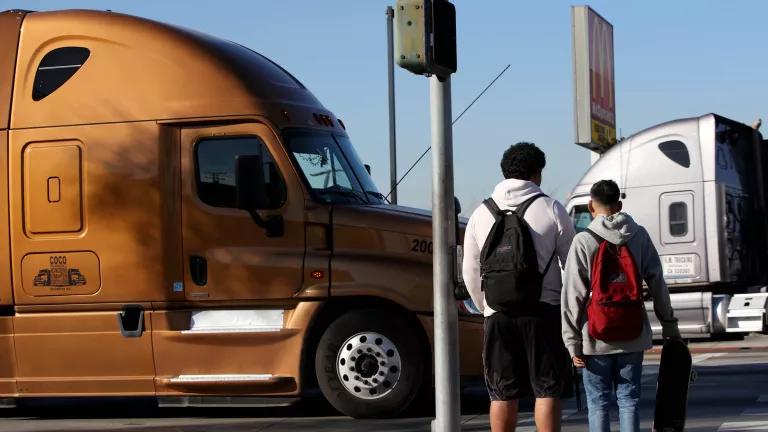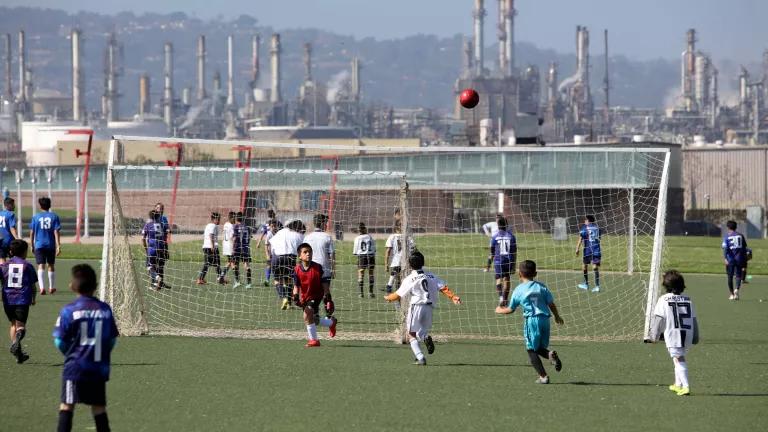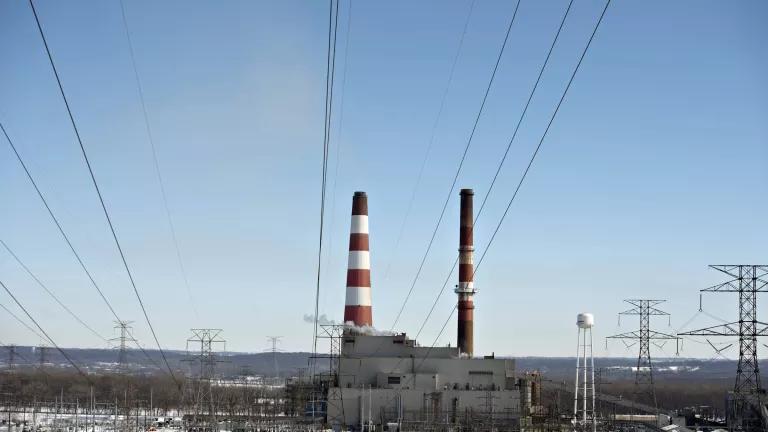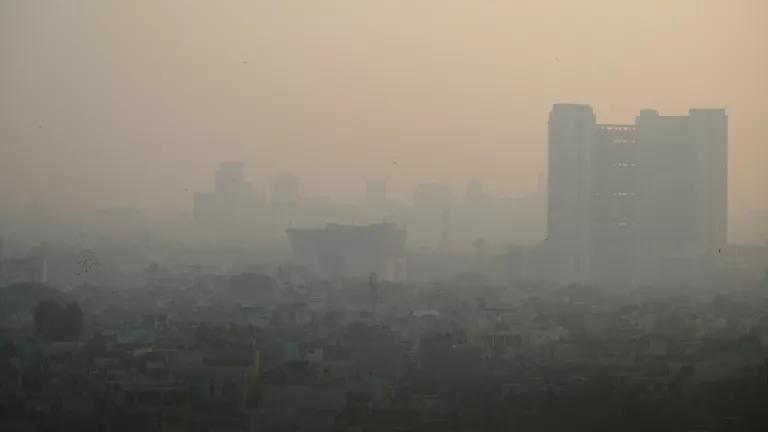California Trucking Association v. South Coast Air Quality Management District et al.
Case Status
Last Update

Truck traffic at a busy intersection near Cabrillo High School in Long Beach, California
Ann Johansson for NRDC
Ozone is a harmful pollutant formed by the chemical reaction between nitrogen oxides and volatile organic compounds in sunlight. Ozone pollution, sometimes referred to as smog, can trigger various health problems, including chest pain, coughing, throat irritation, and congestion. Short- and long-term exposure to ozone is known to inflame and damage the airways and aggravate respiratory illnesses.
Ozone pollution affects millions of people living in California’s South Coast Air Basin, which includes Los Angeles, Orange, Riverside, and part of San Bernardino counties. For decades, the air district has ranked as the nation’s most ozone-polluted area and received a failing grade in the American Lung Association’s annual State of the Air report.
As an important means of mitigating harmful ozone, nitrogen oxides, and particulate pollution, the South Coast Air Quality Management District (SCAQMD) introduced the Warehouse Indirect Source Rule (ISR), which requires warehouses to choose from a menu of compliance options to reduce emissions regionally or locally—and garner points (WAIRE points) for these selections each year. Owners and operators may also choose to pay a mitigation fee of $1,000 per WAIRE point or create a customized plan. For instance, custom plans could include developing off-site zero-emission vehicle charging stations. This flexible points-based system will ensure a gradual emission-reduction process, granting individual truckers time to adjust to this new regulation. The rule’s gradual implementation process will ensure a just transition to cleaner warehouse operations, and NRDC is committed to maintaining it, given the high number of truckers who live and work near warehouses and diesel truck routes.
But in 2021, in an attempt by industry to maintain the status quo, the California Trucking Association filed a complaint in the Central District of California seeking to overturn the SCAQMD Warehouse ISR. The following year, NRDC—already part of a strong coalition in communities near L.A. and Long Beach ports—joined local partners and environmental allies to defend this life-saving regulation.
In a victory for those who live and work in the area, in December 2023, a federal district court judge rejected the trucking association’s claims. The court’s decision is a resounding confirmation of SCAQMD’s legal authority to adopt indirect source rules throughout the southern coast and opens the door for similar measures in other parts of California and the nation.
SCAQMD’s Warehouse ISR is an example of how ISRs are a tool for transparency and community empowerment. NRDC is committed to fighting future litigation that will inevitably ensue and will continue to defend this novel rule and the efforts to reduce cumulative impacts along the ports for future generations’ health and safety.
Related Content

In Long Beach, Touring a Toxic Neighborhood on Bike

Air Pollution: Everything You Need to Know

What Is the Air Quality Index?

The Clean Air Act 101
President Biden Can Take Action to Eliminate Shipping Emissions and Advance Environmental Justice

This Is What a Just Transition Looks Like
